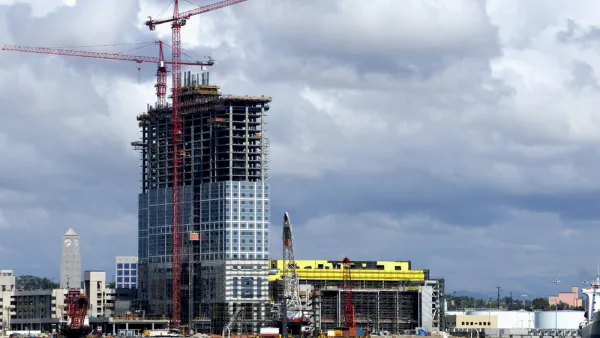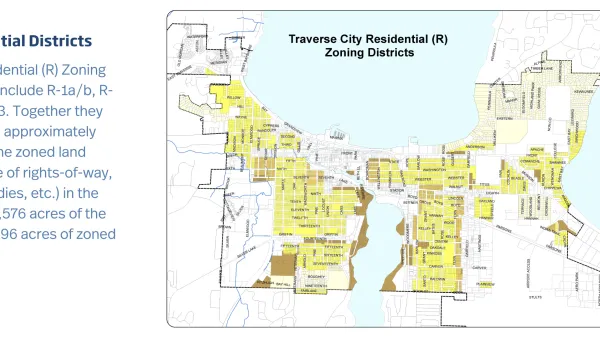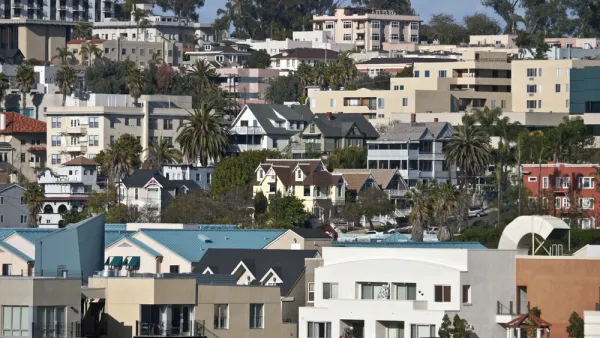A recent package of code changes by the city of San Diego will make it possible to build high-rise residential buildings and accessory dwelling units in larger areas around public transit.

The city of San Diego recently approved an ordinance that will allow high-rise apartment buildings and accessory dwelling units in a larger portion of the city by expanding the boundaries of zoning for transit oriented development from a half-mile to a mile radius around transit stations. Specifically, the expanded zoning districts will allow high-rise apartment buildings and accessory dwelling units on more parcels in the city.
David Garrick last week broke the news of the ordinance’s approval for the San Diego Union-Tribune and Globe St. also picked up the news this week. Planetizen shared news of the ordinance in January, before it went up for approval by the San Diego City Council.
Garrick’s article provides more insight into the debate that preceded the 5-4 vote that approved the ordinance. Opponents on the City Council argued that one-mile is too far to walk, and the ordinance would create congestion due to the additional car trips created by new residential density. Proponents argues that the zoning change would create opportunities for more housing affordable at low- and middle-incomes.
As noted by Garrick, the zoning changes discussed here were included in a package of 84 total municipal code changes. “The other changes include outlawing storage facilities in prime industrial areas, expanding where tasting rooms are allowed and making downtown more family-friendly with new incentives for three-bedroom apartments and child care businesses,” and “Additional changes approved Tuesday as part of the annual code update include tougher rules for new projects vulnerable to sea-level rise and stronger wildfire prevention rules for climate-friendly energy storage facilities.”
Garrick’s article, linked below, suggests that the zoning change came about as a response to pressure from state housing regulators during the Regional Housing Needs Assessment process, which has been upending planning the state of California for the past year, and will continue to do so for the foreseeable future.
FULL STORY: Badly needed homes, or ‘infill sprawl?’ City approves controversial plan for high-rises farther from transit

Analysis: Cybertruck Fatality Rate Far Exceeds That of Ford Pinto
The Tesla Cybertruck was recalled seven times last year.

National Parks Layoffs Will Cause Communities to Lose Billions
Thousands of essential park workers were laid off this week, just before the busy spring break season.

Retro-silient?: America’s First “Eco-burb,” The Woodlands Turns 50
A master-planned community north of Houston offers lessons on green infrastructure and resilient design, but falls short of its founder’s lofty affordability and walkability goals.

Test News Post 1
This is a summary

Analysis: Cybertruck Fatality Rate Far Exceeds That of Ford Pinto
The Tesla Cybertruck was recalled seven times last year.

Test News Headline 46
Test for the image on the front page.
Urban Design for Planners 1: Software Tools
This six-course series explores essential urban design concepts using open source software and equips planners with the tools they need to participate fully in the urban design process.
Planning for Universal Design
Learn the tools for implementing Universal Design in planning regulations.
EMC Planning Group, Inc.
Planetizen
Planetizen
Mpact (formerly Rail~Volution)
Great Falls Development Authority, Inc.
HUDs Office of Policy Development and Research
NYU Wagner Graduate School of Public Service




























